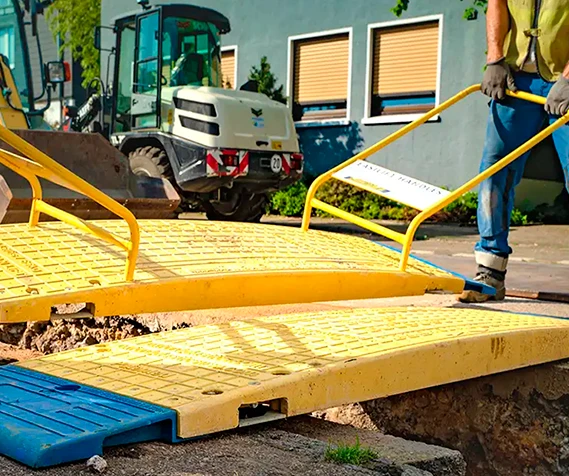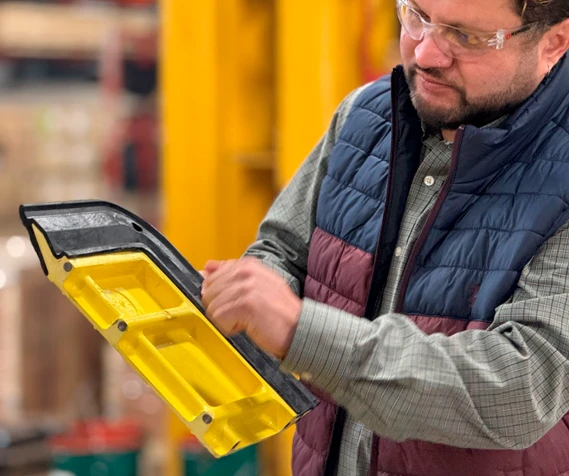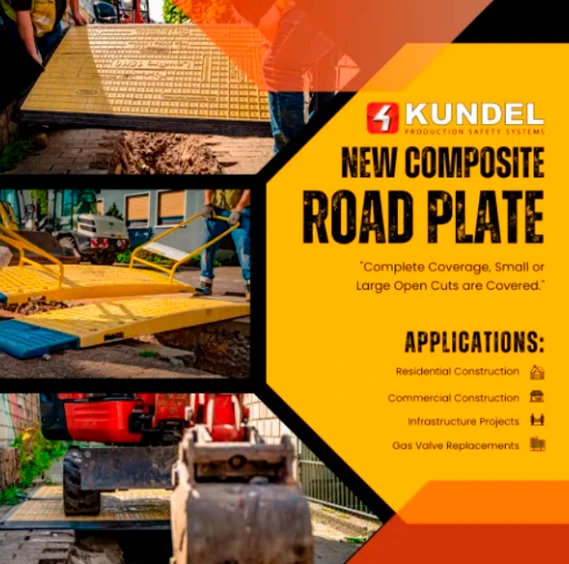Why Leading Contractors Are Replacing Steel with Smarter Alternatives
Every project manager, municipality, and utility contractor knows the story: Steel plates are strong—but they’re also heavy, loud, and expensive to manage. The industry is evolving, and KUNDEL’s composite road plates are leading the change.
This guide breaks down exactly how, when, and why to upgrade.
1. Why Steel Is Being Reconsidered
| Traditional Steel Plates | Composite PLates by KUNDEL |
| Heavy, crane required deployment | Lightweight, 2-person install |
| Loud, disruptive in traffic zones | Noise reducing rubber edges |
| Prone to rust, high maintenance | Corrosion resistant composite |
| High transport, and handling costs | Lower labor & fuel demands |
| Strong, but overbuilt for many jobs | Optimized for standard site loads |
Bottom line: Steel has its place—but most jobs don’t need that much hassle.
2. What Makes KUNDEL’s Composite Plates Different
- Engineered Core Strength: Rebar-reinforced composite built to withstand high loads common in city and utility work.
- Rubber-Edged Design: Reduces shifting and noise; ideal for public roads and pedestrian areas.
- Pin-Lock System: Keeps plates firmly in place—no guesswork, no hazards.
- Durability Without Rust: No corrosion = longer life with less upkeep.
3. Deployment Made Simple
How to roll out composite plates on your job site:
- Identify Use Cases: Great for trench work, utility covers, or short-term road access.
- Train for Safe Handling: Light enough for a two-person crew—no heavy machinery.
- Pilot a High-Visibility Site: Track noise complaints, setup time, and installation costs.
- Document Results: Measure savings in labor, time, and operational disruption.
- Scale Strategically: Replace aging steel inventory where composite excels.
4. Best Practices for Longevity
- Always confirm load ratings against your site specs
- Avoid aggressive use with track equipment or dropped loads
- Clean edges and pin areas regularly
- Store flat and avoid stacking in uneven conditions
A well-maintained composite plate can outperform steel in both durability and total cost of ownership.
5. Cost Analysis: Not Just About the Plate
Yes, steel is cheaper to buy. But what about:
- Crane or forklift rentals?
- Crew overtime for handling?
- DOT violations for noise or placement?
- Repairs from rust or corrosion?
KUNDEL’s composite plates often pay for themselves in reduced labor, downtime, and complaints.
The Smarter Choice for Smarter Jobsites
KUNDEL’s composite road plates are more than a trend—they’re a strategic upgrade for safety, efficiency, and performance. For teams looking to reduce liability, improve workflow, and modernize their trench safety systems, it’s time to make the switch.
📩 Want to learn more?
Explore the composite road plate guide to learn more or message our team at info@kundel.com for more information.



